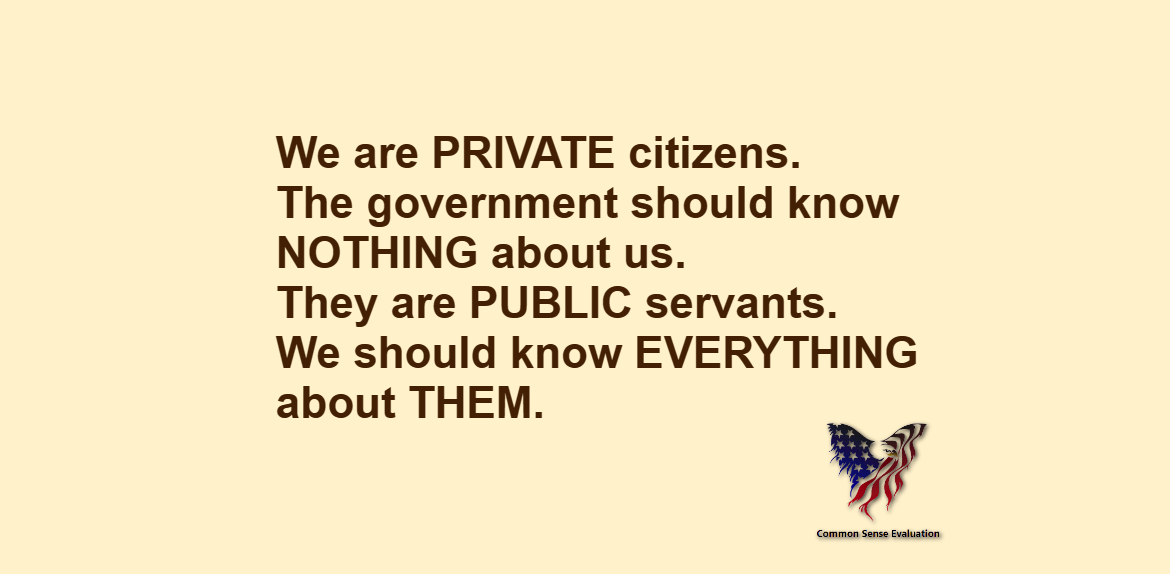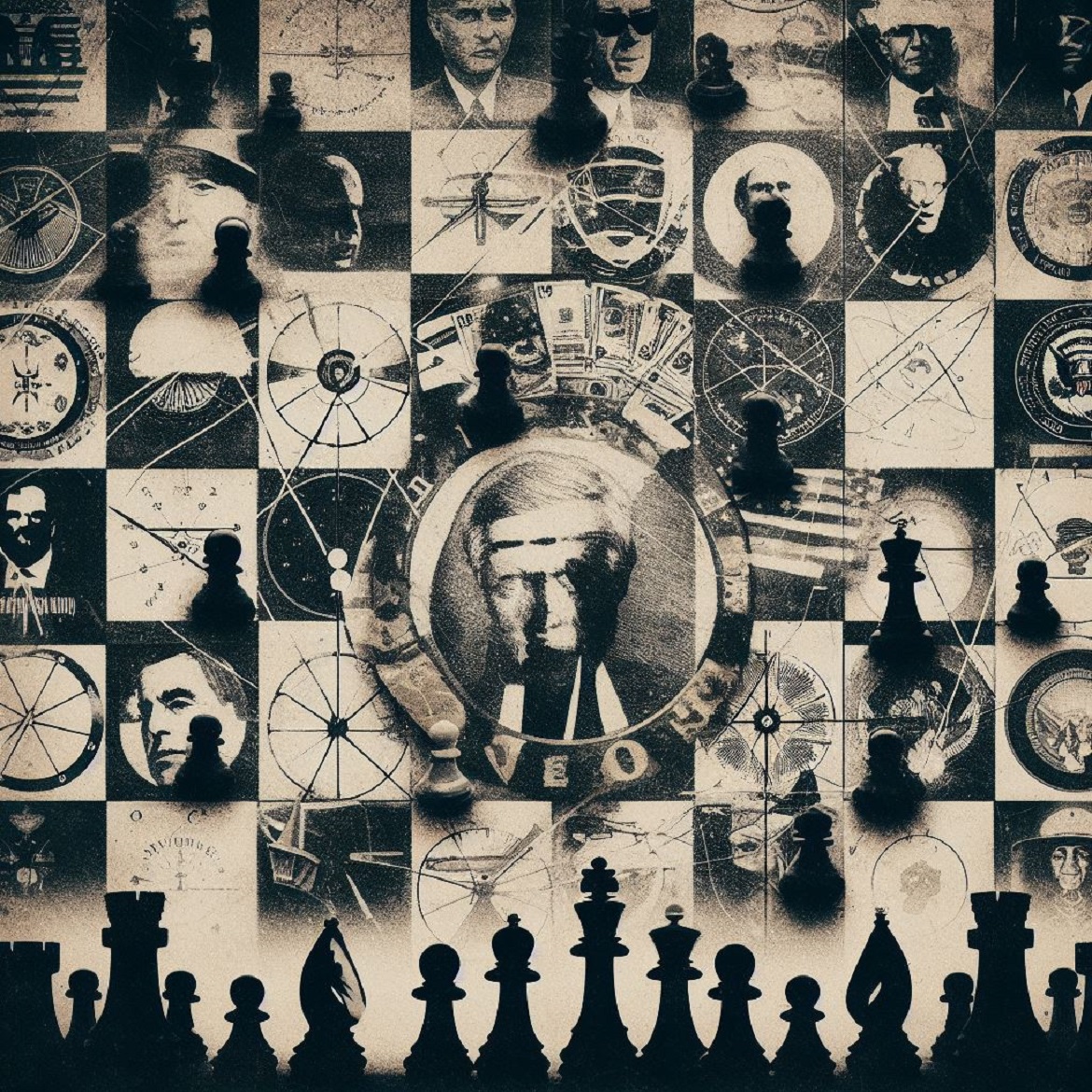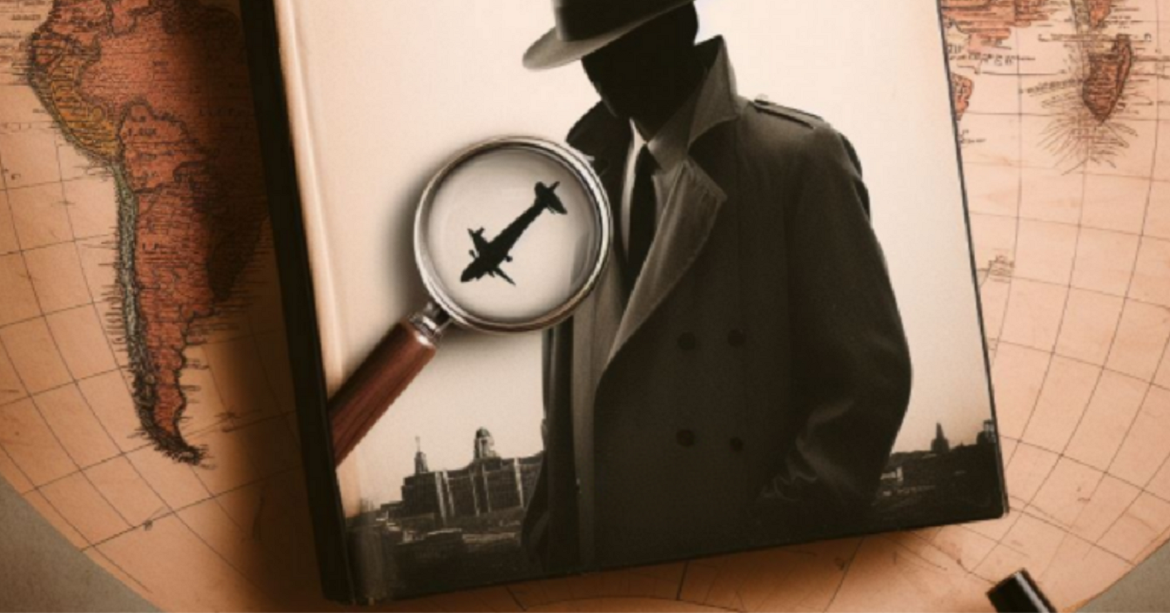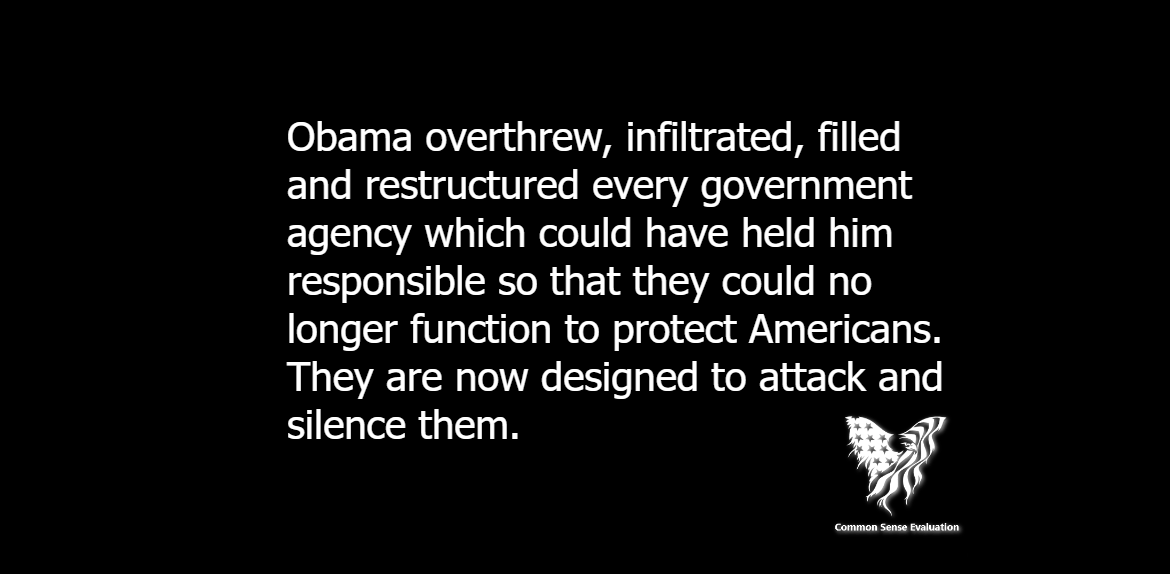We are PRIVATE citizens.
The government should know NOTHING about us.
They are PUBLIC servants.
We should know EVERYTHING about THEM.
The Jack Ruby Connection: The LBJ Conspiracy in the JFK Assassination
The tragic assassination of President John F. Kennedy remains shrouded in a web of mysteries and conspiracies in the annals of American history. One pivotal figure in this mystery is Jack Ruby, the man who, on live television, shot Lee Harvey Oswald, the alleged assassin of JFK. What unfolded in that chaotic moment, as Ruby pulled the trigger, has since fueled speculations and theories, with some suggesting a deeper conspiracy involving then-Vice President Lyndon B. Johnson (LBJ). Let’s look into the cryptic testimony of Jack Ruby, explore the shadows that hint at a connection between Ruby’s actions and a larger conspiracy involving LBJ, and unravel the mystery surrounding Ruby’s own demise.
The Man Behind the Trigger
Jack Ruby, a nightclub owner with connections in the Dallas underworld, became an unexpected protagonist in the aftermath of Kennedy’s assassination. On November 24, 1963, just days after JFK’s death, Ruby shot Oswald in the basement of the Dallas Police Department. The public spectacle of this act, broadcasted on live television, marked a surreal twist in the already surreal narrative surrounding Kennedy’s murder.
Ruby’s motives for killing Oswald have been a subject of intense scrutiny. While the official explanation proposes that Ruby acted out of grief and a sense of justice, there are tantalizing hints that his actions might have been influenced by forces beyond a simple desire for retribution.
Unraveling Ruby’s Testimony
In the aftermath of the shooting, Jack Ruby faced legal proceedings that sought to uncover the motives behind his impulsive act. During the trial, Ruby’s testimony unfolded like a cryptic script, leaving breadcrumbs that hinted at a deeper narrative.
One notable moment occurred when Ruby was asked about his motivation for shooting Oswald. Instead of providing a straightforward answer, Ruby’s response hinted at a larger conspiracy. He alluded to being a pawn in a game orchestrated by powerful figures, suggesting that he was not acting alone.
The LBJ Connection
The most intriguing aspect of Ruby’s cryptic testimony revolves around his subtle references to Lyndon B. Johnson. While not explicitly implicating LBJ, Ruby’s words and demeanor during the trial raise questions about the extent of Johnson’s involvement in the events surrounding Kennedy’s assassination.
Ruby’s insinuations about being a mere cog in a larger machine aligned with theories circulating at the time that LBJ might have had a motive to eliminate JFK. Some theorists argue that Johnson, eager to ascend to the presidency, had a hand in orchestrating Kennedy’s demise. Ruby’s cryptic testimony adds fuel to this speculative fire.
Jack Ruby Implicates LBJ in JFK’s Assassination:
Connecting the Dots
To understand the potential LBJ connection, we must examine the political climate of the era. Lyndon B. Johnson, a skilled political operator, had ambitions that reached beyond the vice presidency. Some theorists argue that Johnson, fearing exclusion from the political spotlight, may have sought to eliminate JFK to pave his way to the presidency.
Ruby’s cryptic remarks about being a pawn in a larger game align with the notion that powerful forces were at play behind the scenes. While these theories fall short of providing concrete evidence, they underscore the lingering doubts and suspicions surrounding the official narrative of Kennedy’s assassination.
Unanswered Questions
Decades after these events, questions surrounding Jack Ruby’s true motivations persist. The perplexity of his cryptic testimony, coupled with the persistent whispers of a larger conspiracy involving LBJ, leaves the door wide open for alternative narratives and theories.
The legacy of that fateful day in Dallas continues to be a tapestry of uncertainties and unexplored avenues. Jack Ruby’s role, once considered a mere footnote in the larger narrative, emerges as a pivotal piece in the puzzle that is the Kennedy assassination.
Ruby’s Mysterious Demise
Adding another layer of intrigue to the narrative is the mysterious death of Jack Ruby. While in prison awaiting a new trial, Ruby succumbed to a sudden and fatal illness on January 3, 1967. His death, just three years after the shooting of Oswald, fueled speculation that Ruby might have been silenced to prevent him from revealing more about the events surrounding Kennedy’s assassination.
Digging into the details of Ruby’s death, the official cause listed on the death certificate was pulmonary embolism, a condition where a blood clot lodges in the lungs, leading to respiratory failure. However, the circumstances of Ruby’s sudden illness and the rapid progression of his demise have sparked skepticism and fueled conspiracy theories.
Questions linger regarding the timing and nature of Ruby’s illness. Was it a mere coincidence, or did it serve a darker purpose? Some theorists suggest that Ruby’s death may have been orchestrated to silence a potential informant, raising doubts about the official narrative surrounding his demise.
Conclusion
In the dark corridors of history, the shadows of doubt and suspicion persist. Jack Ruby’s cryptic testimony, when viewed through the lens of a potential LBJ connection, adds layers of intrigue to an already complex narrative. While concrete evidence remains elusive, the echoes of that moment in the Dallas Police Department basement reverberate, inviting us to peer into the shadows and question the veracity of the official story. As we continue to unravel the mysteries of the past, the mystery of Jack Ruby’s actions, the potential involvement of Lyndon B. Johnson, and the mystery surrounding Ruby’s own demise remain as elusive and compelling as ever.
Behind Closed Doors: The Secret World of the CIA’s 7th Floor
In the labyrinthine world of intelligence agencies and covert operations, there exists a concealed chamber at the heart of power – the enigmatic 7th Floor of CIA Headquarters. This elusive realm has long been the subject of speculation, drawing intrigue and curiosity from those seeking to understand the inner workings of the United States’ intelligence apparatus. While it remains a discreet and secretive domain, this article aims to shed light on the 7th Floor’s role in shaping the fate of the nation, subtly influencing presidential elections, and guiding the direction of the country’s governance.
The Veil of Secrecy
Picture the 7th Floor as a covert club within the CIA, a secret society, but not in the traditional sense. This is where the most powerful and influential minds gather to make decisions that have a profound impact on the United States. From the outside, it’s just another floor in the Langley headquarters, but behind its closed doors lies a world shrouded in mystery and intrigue.
Recruitment and Induction
One of the 7th Floor’s most guarded secrets is its recruitment process. This is no job application or interview in the conventional sense. Those who make it to this elite level of the CIA are handpicked based on their unwavering loyalty, extraordinary skills, and an innate understanding of how to wield power. There are no formal qualifications or CVs; this is the realm of whispers and connections.
Operational Control
While the President of the United States may appear to be the nation’s ultimate decision-maker, the 7th Floor possesses a hidden authority that extends beyond the White House. It operates in the shadows, using its vast network of operatives, informants, and surveillance capabilities to control information flow and manipulate the course of events.
The Art of Manipulation
The 7th Floor masters the art of manipulation. It is about rigging elections and exerting brute force; it is about controlling the narrative, shaping public opinion, and subtly influencing the masses. Information is the key, and the 7th Floor holds the master key.
Influence Over Presidential Elections
Ever wondered how certain presidential candidates rise to power? It’s not just charisma and political savvy that propel them to the top. The 7th Floor plays an integral role in selecting and grooming candidates who align with its interests. Through a sophisticated system of intelligence-gathering and strategic maneuvering, it ensures that only the most controllable and accommodating individuals make it to the final race.
Running the Show
Once the President takes office, the 7th Floor continues to pull the strings. They feed crucial information, shape policy decisions, and maintain a tight grip on classified operations. The President may be the face of the nation, but behind the scenes, it’s the 7th Floor that steers the ship. The President is essentially a puppet.
The Elusive Puppet Masters
The most astonishing aspect of the 7th Floor’s operations is its ability to remain in the shadows. While names like the FBI, NSA, and other intelligence agencies are well-known, the 7th Floor remains discreet, quietly orchestrating events from the background. It’s the true puppet master in the theater of power.
Unseen Hand in World Affairs
The 7th Floor’s influence isn’t confined to domestic matters alone. It extends its reach globally, dictating foreign policy, espionage, and even the rise and fall of leaders in other nations. This hidden hand has far-reaching consequences, shaping the world order in ways we can scarcely comprehend.
Checks and Balances?
You might be wondering, “What about checks and balances?” Well, the 7th Floor has mastered the art of staying beyond the reach of any oversight. It manipulates internal investigations, silences dissent, and exerts control over media outlets to ensure its secrets remain hidden.
The Power of Information
In the digital age, information is the currency of power. The 7th Floor’s control over information, both classified and public, gives it an edge that no other entity possesses. It’s not just about spying or espionage; it’s about controlling narratives and shaping the collective consciousness of the nation.
The Invisible Struggle
You might be tempted to think of the 7th Floor as a monolithic entity, but within its ranks, there are power struggles and rivalries. While the ultimate goal remains the same – to influence and shape the nation – different factions vie for dominance, and this internal strife can have far-reaching consequences.
The Price of Silence
To maintain its covert operations, the 7th Floor relies on a culture of silence. Those within its ranks are bound by a code of secrecy, knowing that any breach could have dire consequences. This silence extends to whistleblowers, who are silenced through various means.
The Question of Accountability
The question of accountability is a pertinent one. How can an entity like the 7th Floor be held responsible for its actions when it remains beyond the purview of conventional oversight? The answer remains elusive, and as long as the 7th Floor continues to operate in the shadows, accountability will remain a distant dream.
Final Thoughts
As we journey through the dark corridors of power and secrecy, one must grapple with the disquieting reality that the 7th Floor’s influence serves as a chilling reflection of a secret realm that persists in our world. The implications of this shadowy force extend beyond the confines of imagination, and its impact on the nation’s fate is an unsettling reminder of the ambiguity surrounding true power.
In a world where secrecy reigns and the machinery of influence remains hidden, we are left with disconcerting questions that echo in the void of accountability. It is in this murkiness that we must confront the ominous specter of unchecked authority and its pervasive reach, pushing us to scrutinize the depths of our government with a wary eye.
The 7th Floor serves as a haunting reminder of the concealed forces that shape our collective destiny. It is a somber reflection on the nature of power and the weighty silence that surrounds those who govern from the shadows. As we conclude this journey, we must acknowledge that, sometimes, reality can be far darker than fiction, and the true depth of influence remains hidden beneath layers of secrecy.
Obama
The Untold Story of Phyllis J. Hall: The Nurse Who Witnessed JFK’s Fatal Night
In the chronicles of American history, the tragic assassination of President John F. Kennedy remains an indelible mark. The events of that fateful day in Dallas, Texas, have been scrutinized from countless angles, but one key witness has largely remained in the shadows: Phyllis J. Hall, the nurse who was present in the emergency room when JFK was brought in after being fatally shot. Her account of what she witnessed that day is both fascinating and confusing, shedding new light on an already mysterious event.
A Nurse’s Ordinary Day Turned Extraordinary
Phyllis J. Hall was an experienced nurse at Parkland Memorial Hospital in Dallas on November 22, 1963. Little did she know that this ordinary day would take a chilling turn when President Kennedy’s motorcade arrived at the hospital with the gravely wounded leader.
As the gurney carrying the President was rushed into the emergency room, Hall immediately went to work, assisting the medical team. In the midst of the chaos, she made a discovery that would set her apart from all others who bore witness to that historic moment.
The Bullet Between the Earlobe and Shoulder
While attending to JFK, Phyllis Hall noticed something unusual – a bullet lodged between the President’s earlobe and shoulder. This discovery was shocking for several reasons. First, it confirmed that JFK had indeed been shot, dispelling any initial doubts. Second, the location of the bullet raised perplexing questions about the trajectory of the fatal shots.
Hall described the bullet as pristine, unlike any she had ever seen. It was fully intact, showing no signs of deformation or damage that would typically occur upon striking bone or tissue. This was an anomaly that begged for an explanation.
The Mysterious Disappearance
Despite the significance of Hall’s discovery, the bullet she found was never entered into evidence. This fact adds yet another layer of mystery to an already enigmatic event. The Warren Commission, tasked with investigating the assassination, relied on a different narrative, one that excluded Phyllis Hall’s crucial testimony.
This omission has fueled conspiracy theories and speculation for decades. Why was such a crucial piece of evidence seemingly swept under the rug? Was there an effort to control the narrative surrounding JFK’s assassination?
Phyllis Hall’s Unwavering Account
Phyllis J. Hall’s account of the bullet discovery has remained consistent throughout the years. She has always maintained that the bullet she found was in pristine condition, challenging the official narrative of JFK’s assassination.
In interviews and conversations with researchers and journalists, Hall has repeatedly emphasized her surprise at the bullet’s condition. She could not reconcile the lack of damage with the severe injuries sustained by President Kennedy. Her unwavering testimony adds credibility to her claim and underscores the need for a thorough reexamination of the events of that tragic day.
JFK shooting witness: nurse recalls day President Kennedy was shot in Dallas:
The Lone Nurse’s Courage
In the aftermath of JFK’s assassination, Phyllis J. Hall faced immense pressure to conform to the official narrative. However, she refused to back down from her account of finding the pristine bullet between JFK’s earlobe and shoulder. Her courage in the face of scrutiny and the passage of time is commendable.
Hall’s steadfastness serves as a reminder that even seemingly ordinary individuals can play a pivotal role in shaping history. Her simple act of bearing witness to a crucial piece of evidence has left an indelible mark on the JFK assassination story.
Seeking the Truth
The enduring mystery surrounding JFK’s assassination continues to captivate the American public and people around the world. Phyllis J. Hall’s account adds another layer to this complex narrative, raising important questions about the events of that day and the subsequent investigation.
While we may never fully unravel the mysteries of November 22, 1963, one thing remains clear: Phyllis J. Hall’s courage in standing by her account is a testament to the enduring pursuit of truth. As we reflect on this dark chapter in American history, we must remember the lone nurse who saw something unusual and spoke out. Her testimony challenges us to keep seeking answers to the questions that linger in the shadows of that tragic day.




